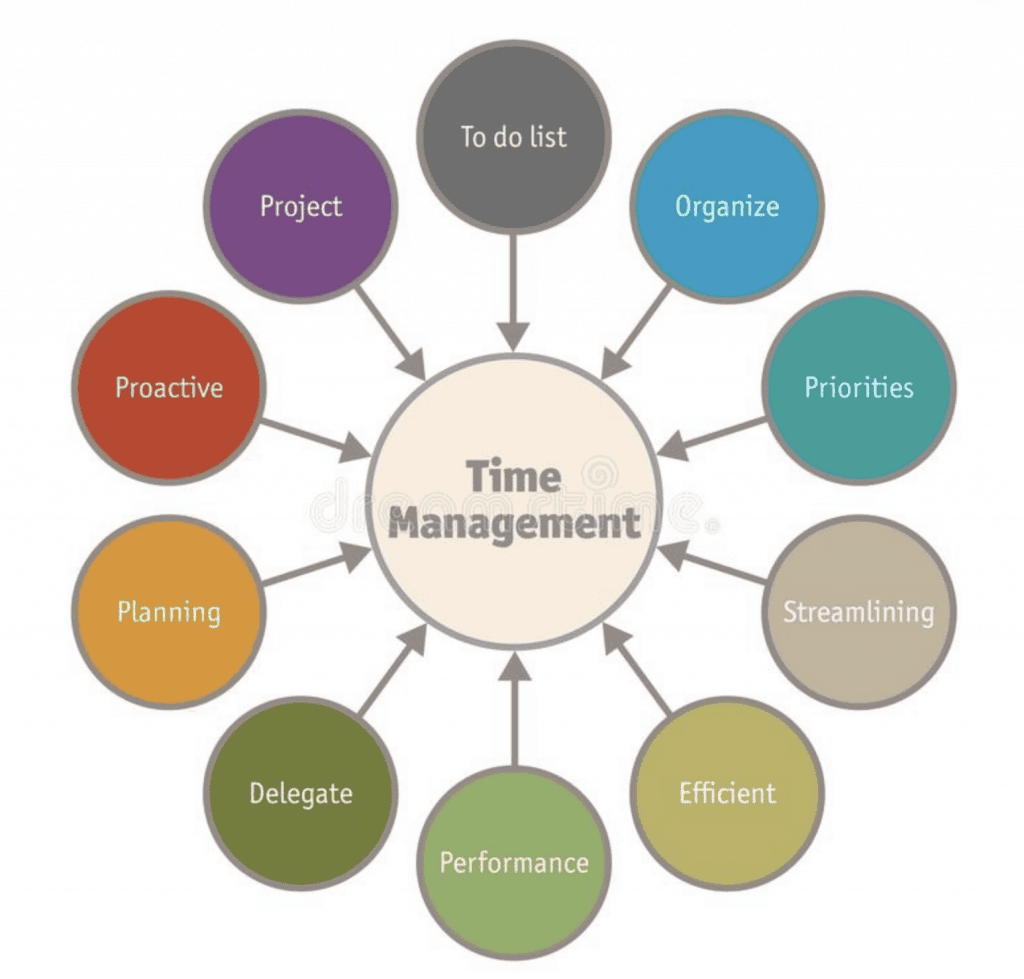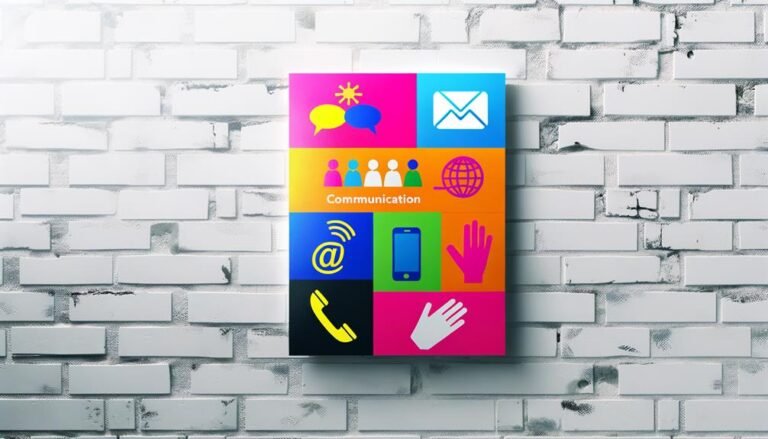I. Introduction to Soft Skills Definition
Soft skills definition: sometimes referred to as people skills or interpersonal skills, are the non-technical, intangible abilities that enable individuals to interact effectively and harmoniously with others. In today’s fast-paced and ever-evolving world, soft skills have become increasingly important for personal and professional success. While technical skills and expertise are essential for specific roles, soft skills serve as a foundation for building strong relationships, achieving goals, and adapting to change.
In personal life, soft skills help individuals form lasting relationships, navigate difficult situations, and manage emotions. They contribute to effective communication, empathy, and understanding, allowing people to better connect with family, friends, and acquaintances. Soft skills also play a crucial role in fostering personal growth, as they enable individuals to reflect on their actions, learn from their mistakes, and develop resilience.
In the professional realm, soft skills are often the key differentiators between employees who excel in their roles and those who struggle. Employers increasingly value and prioritize soft skills, recognizing their impact on team dynamics, customer satisfaction, and overall productivity. From communication and teamwork to leadership and problem-solving, soft skills are vital for career advancement and success in various industries.
This guide aims to provide an in-depth understanding of soft skills, their importance, and how to develop them. The guide is organized into sections, each dedicated to a specific soft skill. Each section will cover the definition and significance of the skill, as well as practical tips and strategies for cultivating that skill. By the end of this guide, readers will have a comprehensive understanding of the following soft skills: communication, teamwork and collaboration, adaptability and flexibility, emotional intelligence, leadership and influence, time management and organization, creative thinking and innovation, and work ethic and professionalism. Ultimately, this guide will serve as a valuable resource for those seeking to enhance their personal and professional lives through the development and application of soft skills.
II. Communication Skills
A. Definition and significance
Communication skills encompass the ability to effectively convey and interpret messages, both verbally and non-verbally, to others. These skills are essential in all aspects of life, as they facilitate understanding, cooperation, and the exchange of ideas. Effective communication helps build trust and rapport, resolve conflicts, and foster collaboration in personal and professional settings.

B. Active listening
Active listening is a crucial component of effective communication. It involves fully concentrating on the speaker, understanding their message, and responding thoughtfully. Active listening demonstrates respect and empathy, making others feel heard and valued. To practice active listening:
- Maintain eye contact with the speaker.
- Avoid interrupting or finishing their sentences.
- Use non-verbal cues, such as nodding, to show engagement.
- Ask open-ended questions for clarification.
- Summarize or paraphrase the speaker’s message to ensure understanding.
C. Verbal communication
Verbal communication involves using spoken words to convey messages. Effective verbal communication is clear, concise, and articulate. To improve verbal communication:
- Use simple, straightforward language.
- Speak with confidence and an appropriate volume.
- Adjust your tone and pace according to the situation.
- Use examples or stories to clarify complex ideas.
- Be mindful of cultural differences and language barriers.
D. Non-verbal communication
Non-verbal communication includes facial expressions, body language, and gestures that convey messages without using words. Non-verbal cues often carry more weight than verbal ones, as they reveal emotions and attitudes. To enhance non-verbal communication:
- Be aware of your facial expressions, posture, and gestures.
- Maintain appropriate eye contact.
- Use positive body language, such as open gestures and a relaxed posture.
- Match your non-verbal cues with your verbal message.
- Be sensitive to cultural differences in non-verbal communication.
E. Written communication
Written communication includes emails, reports, and other forms of text-based correspondence. Clear and concise written communication is essential for conveying information accurately and professionally. To improve written communication:
- Organize your thoughts before writing.
- Use correct grammar, punctuation, and spelling.
- Keep sentences short and focused.
- Use headings, bullet points, and white space for readability.
- Proofread and revise your writing for clarity and precision.
F. Communication barriers and how to overcome them
Various barriers can hinder effective communication, such as cultural differences, language barriers, and emotional barriers. To overcome communication barriers:
- Develop cultural awareness and respect for diversity.
- Learn basic phrases in other languages or use translation tools when necessary.
- Practice active listening and empathy to understand different perspectives.
- Manage your emotions and remain open-minded during conversations.
- Seek feedback and continuously improve your communication skills.
III. Teamwork and Collaboration
A. Definition and importance
Teamwork and collaboration refer to the ability of individuals to work effectively and harmoniously with others toward a common goal. In personal and professional settings, teamwork and collaboration contribute to the successful completion of tasks, the development of innovative solutions, and the creation of a supportive environment. Effective teamwork relies on clear communication, mutual respect, and shared responsibility.

B. Developing a team mindset
A team mindset is essential for fostering collaboration and achieving collective success. To develop a team mindset:
- Focus on shared goals and objectives rather than individual achievements.
- Recognize and appreciate the strengths and contributions of others.
- Be open to different perspectives and ideas.
- Share knowledge and resources to help others succeed.
- Encourage a positive, inclusive, and supportive team atmosphere.
C. Collaborative problem-solving
Collaborative problem-solving involves working together to identify, analyze, and resolve issues. To enhance collaborative problem-solving:
- Define the problem clearly and establish a shared understanding.
- Encourage open communication and active listening among team members.
- Brainstorm multiple solutions and evaluate their feasibility.
- Assign tasks based on individual strengths and expertise.
- Monitor progress, adapt strategies as needed, and celebrate successes.
D. Giving and receiving feedback
Constructive feedback is crucial for personal and team growth. It helps identify areas for improvement and reinforces positive behaviors. To effectively give and receive feedback:
- Be specific, focusing on behaviors and outcomes rather than personal traits.
- Use the “sandwich” method: Start with positive feedback, address areas for improvement, and end on a positive note.
- Be timely, providing feedback as close to the event as possible.
- Be open to receiving feedback and using it as an opportunity for growth.
- Approach feedback with empathy, understanding, and a focus on improvement.
E. Conflict resolution and negotiation
Conflicts are inevitable in any team setting. Effective conflict resolution and negotiation skills help maintain a productive and harmonious work environment. To improve conflict resolution and negotiation:
- Address conflicts promptly and openly, avoiding escalation.
- Practice active listening to understand different perspectives and underlying concerns.
- Stay calm and maintain a respectful, non-confrontational tone.
- Focus on shared interests and seek mutually beneficial solutions.
- Be willing to compromise and find a middle ground when necessary.
V. Emotional Intelligence
A. Definition and relevance
Emotional intelligence (EI) refers to the ability to recognize, understand, and manage one’s own emotions and those of others. It plays a crucial role in personal and professional success, as it enhances communication, decision-making, and relationship-building. High emotional intelligence enables individuals to navigate complex social situations, respond effectively to challenges, and empathize with others.

B. Self-awareness
Self-awareness is the ability to recognize and understand one’s emotions, strengths, weaknesses, values, and motivations. It serves as a foundation for emotional intelligence, as it enables individuals to make informed decisions and manage their emotions effectively. To cultivate self-awareness:
- Reflect on your emotions, thoughts, and behaviors regularly.
- Seek feedback from trusted friends, family, or colleagues.
- Practice mindfulness and meditation to stay present and in tune with your emotions.
- Identify your values and ensure your actions align with them.
- Recognize your strengths and areas for improvement.
C. Self-regulation
Self-regulation involves controlling and managing one’s emotions, thoughts, and behaviors in response to various situations. It enables individuals to remain calm, focused, and adaptable in challenging circumstances. To develop self-regulation:
- Practice deep breathing, mindfulness, or other relaxation techniques to manage stress.
- Set and maintain personal boundaries to avoid emotional burnout.
- Develop healthy coping strategies for dealing with negative emotions.
- Think before reacting and consider potential consequences of your actions.
- Maintain a balanced and positive perspective in difficult situations.
D. Empathy and understanding others
Empathy is the ability to recognize, understand, and share the feelings of others. It is a vital component of emotional intelligence, as it fosters compassion, support, and effective communication. To enhance empathy and understanding of others:
- Practice active listening and pay attention to non-verbal cues.
- Put yourself in the other person’s shoes to better understand their perspective.
- Validate others’ feelings and show genuine concern for their well-being.
- Be aware of cultural differences and individual experiences that may shape emotions.
- Offer support, encouragement, and assistance when appropriate.
E. Social skills and relationship management
Social skills involve effectively interacting, communicating, and building relationships with others. Relationship management is the ability to maintain and nurture positive connections with others over time. Both are essential aspects of emotional intelligence. To improve social skills and relationship management:
- Develop strong communication skills, including active listening, verbal, non-verbal, and written communication.
- Practice empathy, understanding, and compassion in your interactions with others.
- Show genuine interest in others’ lives, thoughts, and feelings.
- Cultivate a sense of humor and a positive attitude to make others feel comfortable.
- Learn to manage conflicts and disagreements in a constructive and respectful manner.
VI. Leadership and Influence
A. Definition and importance
Leadership refers to the ability to guide, inspire, and influence others to achieve a common goal. Influence, on the other hand, is the capacity to shape the opinions, behaviors, and actions of others, both directly and indirectly. Effective leadership and influence are crucial in personal and professional settings, as they drive positive change, facilitate teamwork, and promote individual growth.
B. Leading by example
One of the most effective ways to demonstrate leadership is by leading by example. This involves modeling the behaviors, values, and attitudes you expect from others. To lead by example:
- Be accountable for your actions and take responsibility for mistakes.
- Display a strong work ethic and commitment to excellence.
- Exhibit integrity, honesty, and professionalism.
- Demonstrate resilience and adaptability in challenging situations.
- Practice empathy, active listening, and open communication.
C. Decision-making
Effective decision-making is a critical leadership skill. It involves evaluating options, considering potential consequences, and making informed choices. To improve decision-making:
- Gather relevant information and consult with team members or experts.
- Identify and prioritize decision criteria based on objectives.
- Analyze and weigh the pros and cons of each option.
- Make timely decisions while avoiding impulsive or overly cautious choices.
- Be prepared to adapt or revise decisions based on new information or changing circumstances.
D. Motivating and inspiring others
Leadership involves motivating and inspiring others to reach their full potential and contribute to the team’s success. To effectively motivate and inspire others:
- Set clear expectations and goals that align with individual and team objectives.
- Recognize and celebrate achievements and progress.
- Provide constructive feedback and support for personal growth.
- Communicate a compelling vision that resonates with team members.
- Foster a positive, inclusive, and empowering work environment.
E. Delegation and empowering others
Delegation involves assigning tasks and responsibilities to others, enabling them to develop new skills and contribute to the team’s success. Empowering others involves fostering an environment where team members feel trusted, valued, and capable of making decisions. To effectively delegate and empower others:
- Assess team members’ strengths, skills, and interests to assign tasks accordingly.
- Provide clear instructions, resources, and support to ensure success.
- Encourage autonomy and decision-making within the scope of the assigned tasks.
- Monitor progress without micromanaging, allowing room for growth and learning.
- Acknowledge and appreciate the efforts and contributions of team members.
VII. Time Management and Organization
A. Definition and value
Time management is the process of organizing and allocating time effectively to accomplish tasks, meet deadlines, and achieve goals. Organization refers to the ability to create and maintain an orderly and efficient environment, both physically and mentally. Time management and organization are essential for personal and professional success, as they help reduce stress, increase productivity, and maintain work-life balance.

B. Goal setting
Goal setting is the process of defining specific, measurable, achievable, relevant, and time-bound (SMART) objectives. Effective goal setting provides direction, motivation, and a clear framework for success. To set and achieve goals:
- Identify short-term and long-term objectives that align with your values and priorities.
- Break down larger goals into smaller, manageable tasks.
- Use the SMART criteria to ensure your goals are clear and achievable.
- Monitor your progress and adjust your goals as necessary.
- Celebrate your achievements and learn from setbacks.
C. Prioritization
Prioritization involves determining the importance and urgency of tasks, allowing you to allocate your time and energy effectively. To improve prioritization:
- Make a list of all tasks and responsibilities, both personal and professional.
- Assess the urgency and importance of each task, considering deadlines and potential consequences.
- Use a prioritization matrix, such as the Eisenhower Matrix, to categorize tasks into four quadrants: urgent and important, important but not urgent, urgent but not important, and neither urgent nor important.
- Focus on completing high-priority tasks first, and then move on to lower-priority tasks.
- Reassess your priorities regularly to account for changing circumstances and new tasks.
D. Planning and scheduling
Planning and scheduling involve creating a structured timeline for completing tasks and achieving goals. To enhance planning and scheduling:
- Use a calendar, planner, or digital tool to map out your tasks, deadlines, and commitments.
- Allocate time for each task, considering its priority, duration, and potential obstacles.
- Schedule regular breaks and personal time to maintain work-life balance and prevent burnout.
- Be realistic and flexible with your schedule, allowing room for adjustments and contingencies.
- Review your schedule regularly to ensure you are on track and to make any necessary changes.
E. Managing distractions and interruptions
Distractions and interruptions can disrupt your focus and productivity, making it difficult to manage your time effectively. To minimize distractions and interruptions:
- Create a designated workspace that is comfortable, organized, and free of unnecessary distractions.
- Establish boundaries with family, friends, and colleagues, communicating your need for focused work time.
- Use time management techniques, such as the Pomodoro Technique, to maintain focus and take regular breaks.
- Turn off or silence non-essential notifications on your devices.
- Prioritize tasks that require deep focus during your most productive hours and tackle less demanding tasks during periods of lower energy.
VIII. Creative Thinking and Innovation
A. Definition and significance
Creative thinking refers to the ability to generate new, original, and valuable ideas, while innovation is the process of implementing these ideas to create positive change or improvements. Creative thinking and innovation are crucial in personal and professional settings, as they drive growth, enhance problem-solving, and foster adaptability in a rapidly evolving world.
B. Encouraging curiosity and exploration
Curiosity and exploration are key components of creative thinking and innovation. To foster curiosity and exploration:
- Maintain an open mind and a willingness to learn from diverse sources.
- Ask questions and seek new perspectives to expand your knowledge and understanding.
- Challenge assumptions and conventional wisdom to uncover fresh insights.
- Embrace failure and setbacks as opportunities for learning and growth.
- Engage in activities and experiences outside your comfort zone to stimulate your creativity.
C. Brainstorming and idea generation
Brainstorming is a technique used to generate a wide range of ideas in a collaborative setting. Effective brainstorming and idea generation can lead to innovative solutions and creative breakthroughs. To enhance brainstorming and idea generation:
- Establish a supportive and inclusive environment that encourages open communication and participation.
- Encourage divergent thinking, allowing for multiple ideas and perspectives without judgment.
- Use prompts or constraints to stimulate creative thinking and focus the discussion.
- Record all ideas for later review and evaluation.
- Consider using variations of brainstorming techniques, such as mind mapping or reverse brainstorming, to explore different angles of a problem or topic.
D. Evaluating and refining ideas
Once ideas have been generated, it is essential to evaluate and refine them to determine their feasibility and potential impact. To effectively evaluate and refine ideas:
- Assess the strengths, weaknesses, opportunities, and threats (SWOT analysis) associated with each idea.
- Consider the relevance, originality, and feasibility of the idea in the given context.
- Solicit feedback from peers, mentors, or experts to gain additional insights and perspectives.
- Refine and improve the idea based on the feedback and evaluation, identifying potential obstacles and solutions.
- Iterate on the idea as necessary, incorporating new information and feedback to ensure its continuous improvement.
E. Implementing innovative solutions
Implementing innovative solutions involves turning creative ideas into tangible actions, products, or processes. To effectively implement innovative solutions:
- Develop a detailed plan outlining the steps, resources, and timeline required for implementation.
- Communicate the vision and objectives clearly to all stakeholders, ensuring their support and commitment.
- Delegate tasks and responsibilities based on individual strengths and expertise.
- Monitor progress, adjusting the plan as needed to overcome challenges and capitalize on opportunities.
- Evaluate the results of the implemented solution, learning from successes and failures to inform future innovations.
IX. Work Ethic and Professionalism
A. Definition and importance
Work ethic refers to a set of values and attitudes that emphasize hard work, dedication, and perseverance in the pursuit of personal and professional goals. Professionalism encompasses the behavior, conduct, and appearance expected in a workplace or professional setting. Both work ethic and professionalism are essential for success and career advancement, as they contribute to a positive reputation, effective teamwork, and increased productivity.
B. Responsibility and accountability
Responsibility involves taking ownership of one’s actions, decisions, and tasks, while accountability is the willingness to accept the consequences and learn from the outcomes. To demonstrate responsibility and accountability:
- Acknowledge your role and duties in personal and professional situations.
- Be proactive in addressing challenges, seeking help when necessary.
- Admit mistakes and learn from them, using them as opportunities for growth.
- Follow through on commitments and promises, even in difficult circumstances.
- Evaluate your performance regularly to identify areas for improvement.
C. Integrity and honesty
Integrity is the adherence to strong moral principles and ethical standards, while honesty involves being truthful, sincere, and transparent in one’s actions and communication. To exhibit integrity and honesty:
- Be truthful and accurate in all communications, avoiding exaggeration or distortion of facts.
- Maintain confidentiality and respect privacy when handling sensitive information.
- Uphold ethical standards and adhere to workplace policies and guidelines.
- Avoid conflicts of interest and maintain impartiality in decision-making.
- Demonstrate consistency between your words and actions, reflecting your values and principles.
D. Punctuality and reliability
Punctuality involves arriving on time for appointments, meetings, and deadlines, while reliability refers to the ability to consistently meet expectations and deliver quality results. To showcase punctuality and reliability:
- Develop effective time management skills to ensure timely completion of tasks and attendance at events.
- Communicate promptly if delays or setbacks occur, providing updates and revised timelines.
- Follow through on commitments, ensuring consistency in performance and output.
- Create backup plans and contingencies to address unforeseen challenges or obstacles.
- Build trust by demonstrating dependability and consistency in your actions.
E. Positive attitude and enthusiasm
A positive attitude involves maintaining an optimistic and constructive outlook in personal and professional situations, while enthusiasm is the genuine passion and excitement for one’s work and tasks. To display a positive attitude and enthusiasm:
- Approach challenges and setbacks as opportunities for growth and learning.
- Maintain a solution-oriented mindset, focusing on possibilities rather than limitations.
- Demonstrate genuine interest and passion for your work, going above and beyond when necessary.
- Encourage and support the efforts and achievements of colleagues and team members.
- Cultivate resilience and adaptability, remaining flexible and open to change.
X. Conclusion
A. Recap of soft skills covered
In this guide, we have explored a variety of essential soft skills, including:
- Communication Skills: Active listening, verbal and non-verbal communication, written communication, and overcoming communication barriers.
- Teamwork and Collaboration: Developing a team mindset, collaborative problem-solving, giving and receiving feedback, and conflict resolution.
- Emotional Intelligence: Self-awareness, self-regulation, empathy, and social skills.
- Leadership and Influence: Leading by example, decision-making, motivating others, and delegating tasks.
- Time Management and Organization: Goal setting, prioritization, planning, and managing distractions.
- Creative Thinking and Innovation: Encouraging curiosity, brainstorming, evaluating ideas, and implementing solutions.
- Work Ethic and Professionalism: Responsibility, accountability, integrity, punctuality, and maintaining a positive attitude.
B. Encouragement to continuously develop and refine soft skills
Soft skills are invaluable assets that contribute to personal growth and professional success. It is essential to continuously develop and refine these skills through self-reflection, learning, practice, and feedback. Embrace opportunities to enhance your soft skills, both inside and outside the workplace, and recognize that the journey of self-improvement is an ongoing process.
C. Tips for applying soft skills in daily life and professional settings
To effectively apply soft skills in daily life and professional settings:
- Practice active listening and empathy in conversations, fostering open and respectful communication.
- Collaborate with others, leveraging diverse perspectives and strengths to achieve common goals.
- Embrace self-awareness and self-regulation, managing your emotions and reactions in various situations.
- Demonstrate leadership by taking initiative, making decisions, and inspiring others to achieve their best.
- Use time management and organization techniques to balance personal and professional responsibilities.
- Cultivate creativity and innovation by exploring new ideas and challenging conventional thinking.
- Exhibit a strong work ethic and professionalism, consistently striving for excellence and personal growth.
By integrating these soft skills into your daily life, you will enhance your relationships, increase your effectiveness, and contribute positively to personal and professional environments.








